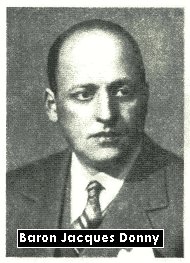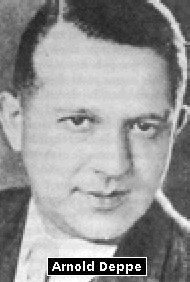Secret Army
In 1977, BBC Television screened a brand new drama series called ‘Secret Army’. Created by Gerald Glaister it attracted great critical acclaim and with its regular cast of Bernard Hepton, Cliford Rose, Jan Frances, Angela Richards and Natalie Chantrens (who I’ve always had a thing for!) proved a great success with the viewing public. Although it only ran to three series, this wartime drama had a profound affect on me.
The series dealt with the trials and tribulations of a wartime Belgian evasion line called ‘Lifeline’. They had set themselves the task of fighting the forces of the Third Reich by sheltering and nursing Allied airmen who had been shot down over Belgium. They then guided these men across occupied Europe to the Spanish boarder and freedom, from where they could be returned to Britain and continue the fight against the enemy. Although some of you might not remember Secret Army, you may remember the comedy ‘Allo Allo’ which followed a few years later, and although the writers deny it, bore so many similarities that it must have been loosely based on the series Secret Army. If you haven’t seen Secret Army, I would recommend you check-out the UKTV Drama television listings since it seems to be re-run on a regular basis now, of buy, as I have the box set DVD available from DD Video which contains all three series along with viewing notes and a couple of documentaries on the subject. Although nearly 30 years old now, I feel this drama was so well acted, written, directed and produced that it has not dated or lost any of its appeal.
My Youth
When it first screened I was only 10 years old, and in my youth, travelling on long overland train journeys across Europe with my parents on holiday, I would often wonder if the barns of the farms I was passing or the lofts of the houses on the outskirts of Paris had ever hidden aircrews from downed Halifax bombers and what it must have been like to live under the tyranny of Hitler’s rule, with swastika flags hanging from every official building and living in fear that the next knock at the door might be from a Gestapo Officer. I never forgot the series, and when I next saw it a couple of years ago on UKTV Drama it was not only a thoroughly good watch second time around, but it also started me wondering if there had ever been a real Secret Army, and if so, how it had come about, how it was able to exist under the watchful eye of the German’s, and how successful it had been. The Internet is a wonderful thing, and within a few minutes I had found a website and forum devoted to the BBC Drama Secret Army. It gave details of filming locations, characters, plots and storylines. Posting a simple question, I asked if anyone knew of websites dealing with the real secret army on which the series had been based. In response I was directed to John Clinch’s website http://www.belgiumww2.info and after reading the first couple of pages I was hooked.
The Real Secret Army
The stories I was reading here, were real history, and the courage and steely determination of the people I was now learning about surpassed anything I had seen in Secret Army. The organisation dramatised on television and called ‘Lifeline’ I learnt was based on a real evasion line, and the character played by Jan Frances called Lisa Colbert (codename Yvette) was in reality a 24 year old Belgian girl Andrée de Jongh (codename Dedee) who despite her youth created the most successful evasion line of them all, but in reality it wasn’t called ‘Lifeline’, it was named ‘Comète’. Over the course of the war this organisation rescued and returned over 800 Allied servicemen back into the safe hands of the British. To do this Andrée de Jongh and a close band of friends and patriots constructed a route from Brussels to San Sabastian in northern Spain. Using safe houses, trains, and a boat they escorted Allied flyers from right under the noses of the Nazi Officers (who knew of there existence and had been charged by Himmler himself to stop and destroy this and other evasion lines) across Belgium, France and the Pyrenees.
But, how was it that I had never leant about this or any other similar organisation in history lessons at school. Where were the memorials built to honour the many Belgian and French patriots who had risked all, and in many cases sacrificed their lives in order to save Allied personnel? It seems the bigger battles such as the D-Day landings, the Battle of Britain and Operation Market Garden take precedence in our collective memory and our acts of remembrance, to these gallant, heroic patriots who fought by resisting the forces of Hitler in the own secretive way. But to my mind these people who fought the enemy without guns, Generals and thousands of troops deserve at least as much thanks as those we remember each November on Remembrance Sunday.
Lest We Forget
I’m no military historian, and I have no wish to become one, I’m just a regular railway worker from York. I have no relatives that were rescued by the line and the only connection I have with the RAF is that my father was a member during his National Services days, but for their courage and the inspiration they have given I would like in my own way to build a memorial to these brave men and women of the Cométe and other evasion lines who helped to free Europe from Hitler’s rule. An act that has meant that I have been able to live and travel across a war free Western Europe, to think, say and do as I like for my entire life.
As the years pass by the number of remaining members of Comète or those who were helped by the line is bound to diminish, but I think it would be a crime if their stories and the spirit of the line were to be lost too. I intend therefore, over the next few months, to follow the route taken by the Comète guides and their rescued aircrews across Europe to see what challenges they might have faced. I intend to visit and photograph the locations and safe houses they would have known as they travelled south. But most of all I want to meet and talk to some of the members of Comète and those that they helped and then record my findings here, as my own small tributeto the men and women of Comète, and for others who may wish to research the Line’s history in the future.
I know it’s not much but, I would then like this blog to serve as my own virtual memorial and would like to dedicate it to all the members of Comète Line and to the courage they showed during Europe’s darkest days.


